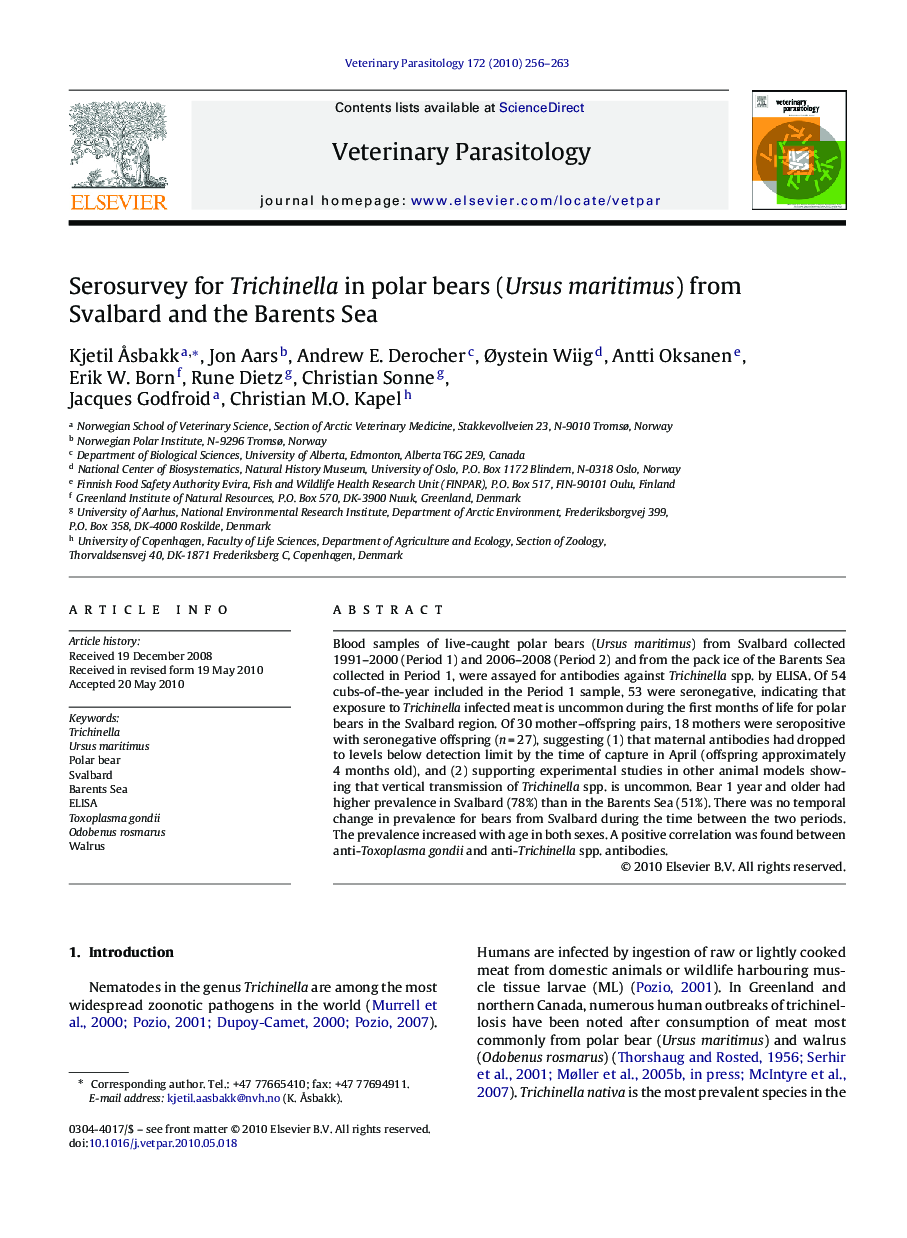| Article ID | Journal | Published Year | Pages | File Type |
|---|---|---|---|---|
| 2470394 | Veterinary Parasitology | 2010 | 8 Pages |
Blood samples of live-caught polar bears (Ursus maritimus) from Svalbard collected 1991–2000 (Period 1) and 2006–2008 (Period 2) and from the pack ice of the Barents Sea collected in Period 1, were assayed for antibodies against Trichinella spp. by ELISA. Of 54 cubs-of-the-year included in the Period 1 sample, 53 were seronegative, indicating that exposure to Trichinella infected meat is uncommon during the first months of life for polar bears in the Svalbard region. Of 30 mother–offspring pairs, 18 mothers were seropositive with seronegative offspring (n = 27), suggesting (1) that maternal antibodies had dropped to levels below detection limit by the time of capture in April (offspring approximately 4 months old), and (2) supporting experimental studies in other animal models showing that vertical transmission of Trichinella spp. is uncommon. Bear 1 year and older had higher prevalence in Svalbard (78%) than in the Barents Sea (51%). There was no temporal change in prevalence for bears from Svalbard during the time between the two periods. The prevalence increased with age in both sexes. A positive correlation was found between anti-Toxoplasma gondii and anti-Trichinella spp. antibodies.
